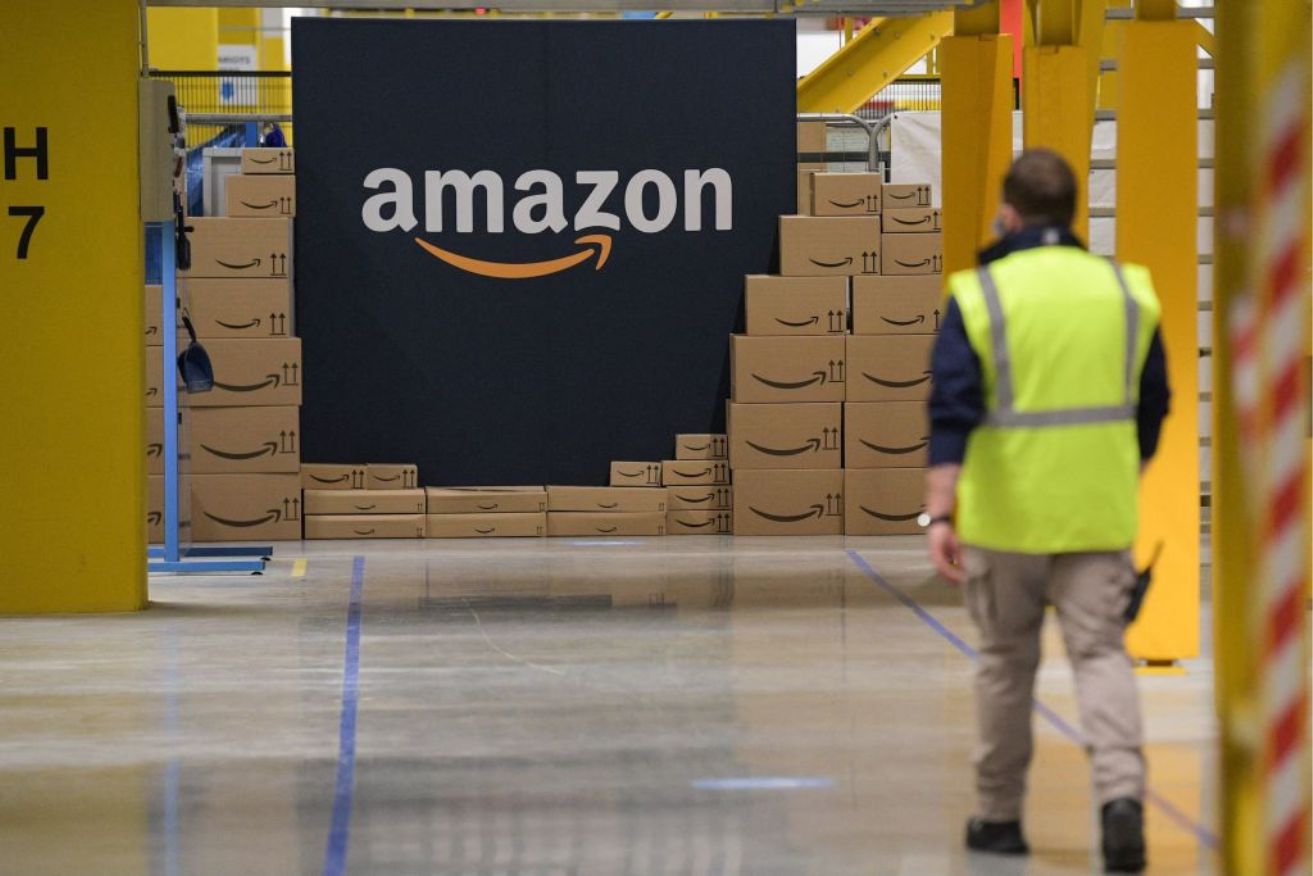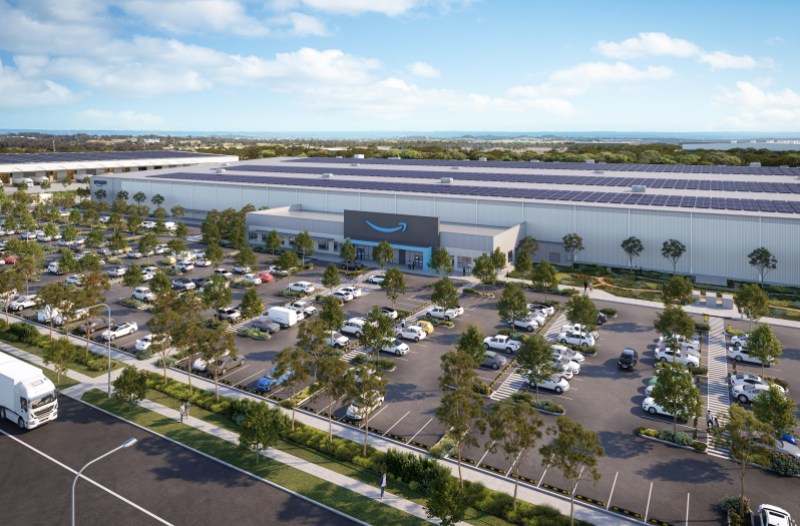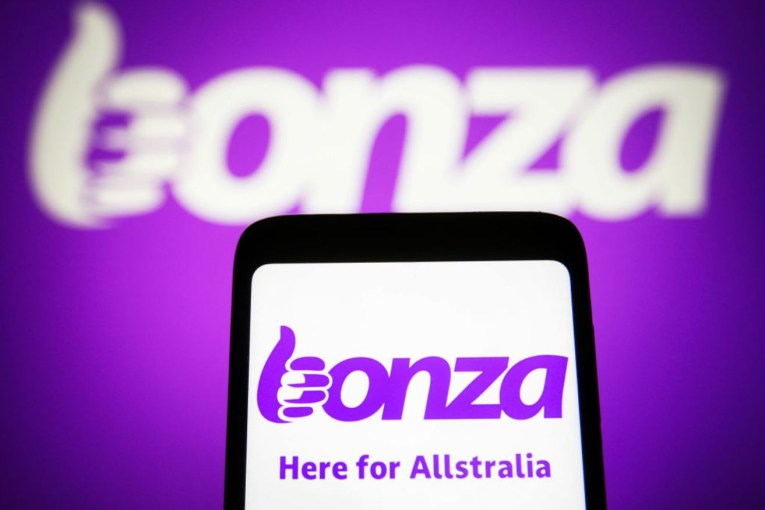‘Category killer’: Amazon targets Harvey Norman, JB Hi-Fi with huge upgrade


Amazon is building two mega warehouses as it looks to muscle in on brands like JB Hi-Fi and Harvey Norman. Photo: Getty
E-commerce giant Amazon is on its way to becoming one of the largest retailers across Australia, retail experts say, as it prepares to break ground on new distribution centres.
Unveiled earlier this week, Amazon is spending $490 million to build two warehouses in Western Sydney to expand its range and speed up its delivery for customers.
The purpose-built fulfilment centres will be completed in early 2026 and span a massive 80,000 square metre area – about 4½ times the size of the Sydney Opera House.
Amazon said the capabilities would specifically improve its household goods ranges, including garden equipment, furniture and flat screen TVs, with local operations manager Sandra McNeil touting increased demand for online shopping and faster delivery times.
That’s a shot across the bow to incumbent retailers in those categories such as Harvey Norman and JB Hi-Fi, which are increasingly competing with the global e-commerce giant.
Queensland University of Technology professor Gary Mortimer said Amazon was “quite possibly” on its way to becoming one of the country’s largest retailers after already threatening the top spot in e-commerce and projecting $5.5 billion in revenue next year.
“Since Amazon’s launch here in Australia, they’ve grown from strength to strength,” he said.
“That obviously provides consumers greater choice and access to potentially lower prices, but also increases competition in the market.”
Retail Doctor Group chief executive Brian Walker predicted Amazon would become Australia’s largest “technology forward” value retailer within three to five years.

An illustration of one of Amazon’s planned warehouses in western Sydney. Photo: Supplied
He said the latest fulfilment centre expansion would bring the e-commerce giant into closer competition with the likes of JB Hi-Fi and Harvey Norman, following its success moving into general merchandise categories once dominated by the likes of Target and Big W.
“The growth formula is to introduce the brand, grow their web engine services, grow Prime and then grow their categories and distribution,” Walker said.
“They’re absolutely on track.”
In 2023, Amazon also announced it would build a fulfilment centre the size of 11 MCGs in Craigieburn, in Melbourne’s north.
Value trade-offs
Mortimer said incumbent retailers with physical store networks were competing by leveraging their bricks-and-mortar footprints, offering a different experience than Amazon can offer.
“It comes down to a value proposition,” Mortimer said.
“When I’m buying bedding, the trade-off is that I can go to a store; I may have to pay a little bit more, but the benefit is I can lay in the bed, check its comfort and talk to a salesperson.
“I could shop online, I might get lower prices, but I forgo the ability to touch and feel and potentially get expert advice.”
But one advantage Amazon had, Mortimer said, was that by offering lower prices it could make sales based off experiences customers have had in the stores of rival retailers.
This practice, called showrooming, is where consumers go into a physical store to see a TV or other product themselves, and then buy the same model elsewhere online.
“How does a physical retailer overcome that? They focus on what online can’t offer which is: ‘Hey, here’s an ability to engage with a salesperson’,” Mortimer said.
Amazon dominates delivery
The rapid growth of Amazon in Australia since its launch Down Under in 2017 has surprised some analysts, who predicted the company would have more trouble sorting its distribution.
But Walker said it was always clear the retail behemoth would be able to bring its global scale to bear on the Australian market, allowing it to offer low prices and market-leading delivery.
The new distribution centres were just the latest example of that strategy in action, he said.
“Amazon is a category killer, there’s no doubt,” Walker said.
“It’s a very tight, closed ecosystem and the big driver is the Prime [membership program].”
The benefit of the Prime program is that after paying an annual fee customers can access faster, free delivery – giving them an incentive to purchase with Amazon.
And from Amazon’s perspective, it generates a stable revenue stream and ensures shoppers don’t look elsewhere, which makes it easier to make huge investments in fulfilment centres.








